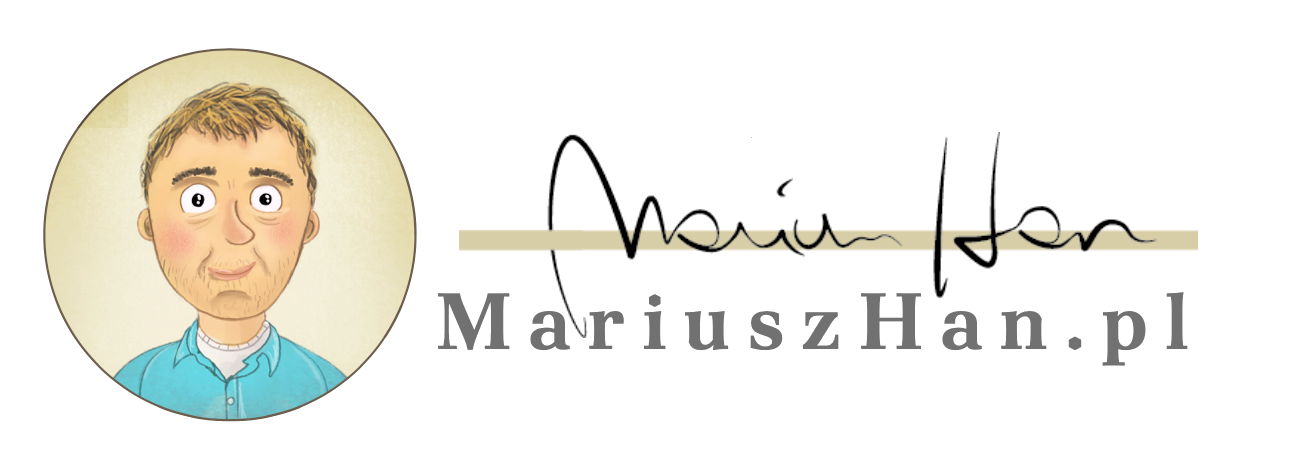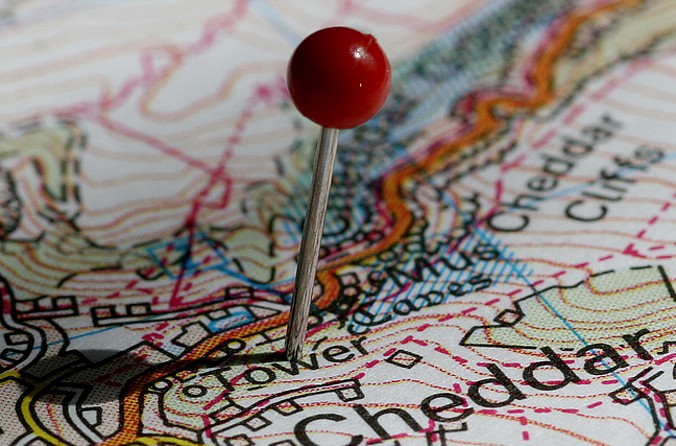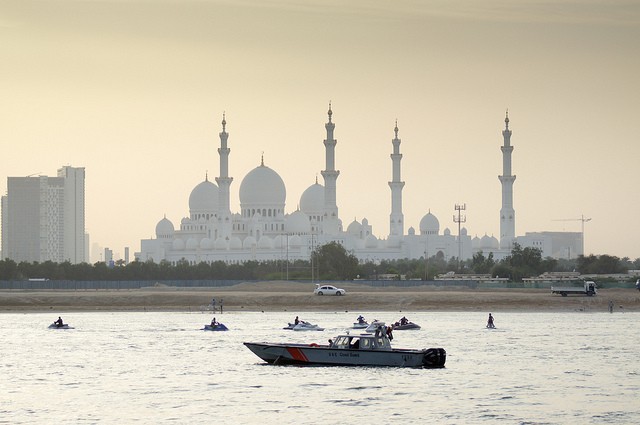“McLuhan heralds the end of print; the Gutenberg galaxy burns itself out. Electric technology can dispense with words, and language can be shunted on the way to universal consciousness… At a certain limit of contemporary vision, language moves towards silence”.[1]
Each day, as many people in this word, I have read newspapers, watch TV, listen radio and search news on Internet. I am still keeping informed about opinion of people in America, Europe, or even Asia, but I don’t know too much about the opinions of peoples in Africa. I really don’t know about unique mass media affected their lives. Mass media are a part of our lives can help us to “break the silence” knowing many places in this word, which we never saw. But the same media can completely destroy our lives, especially family and especially children lives. The dependence from the computer and Internet can provide (lead) complete isolation from the outdoor word, or even resignation from the school, spending this time with the computer games, searching on websites, seeking on pornographic pages. Destructively influents can rally destroy children personality.
Media as a ‘window to the word’ should protect, preserve and progress (formation) present technology evolution. Media literacy, as a part of this technology word, has an in tremendous role to educate the people about media language.
1. Protection
The world of previous generations changed relatively slowly. Today, the culture ‘rotates’ more and more quickly. Every day they appear new ideas, new fashions, new media stars, and new versions of the self identity. For the present young generation Alvin’s Toffler’s ‘Future Shock’[2] simply doesn’t exist. They have incredible skills and habits of adaptation to the incessant changes; fabulous ability to ‘jump’ from one cultural discourse into the second. We can say that we live in, ‘the incessant future. We had
“thirty years to adapt to the new story-telling possibilities of cinema; then twenty years of present-tense television. And then the curve slant upward: five years to acclimate to the VCR and video games; then e-mail, online chats, DVDs, TiVo, the Web – all becoming staples of the pop culture diet in the space of decade. McLuhan had a wonderful term for this accelerating sequence, electric speed”.[3]
Because of this electric speed so many quick changes came in media world. This creates two contrasting views of the “relationship between children and media, both of which have been influential in popular and academic debate.
On the one hand, there is the idea that childhood as we know it is dying or disappearing, and that the media are primarily to blame for this. On the other, there is the idea that the media are now a force of liberation for children – that they are creating a new ‘electronic generation’ that is more open, more democratic, more socially aware than their parents’ generation”.[4] The world of the traditional pedagogic of the teaching by parents and teachers leaves today. Instead of it, the ‘new world rules’ come, embraced the occurrence of the globalization and mass of media. The media introduced the model of ‘unlimited consumption′. The role of the consumer is now constructed around identity and dreams. The world consumption became, for the young generation, be normal, natural and obligatory. Mass media spreads the conviction, that this is the best ‘style life’ on the worlds.
A basic ideology of the consumption is the pleasure and the joy. The ideology of the pleasure implicates, that the duty of the felicitousness, should be reached by any costs. The running shopping system creates faster life speed and the people live in the continuous ′consumer trouble world′. Paradoxally, this is reputed today as a normal and obligatory for ‘modern people’. However, it leads to many paradoxical occurrences.
Postman, in his book Disappearance of Childhood[5] (1983) argues that:
“our modern conception of childhood was a creation of the print media; and that new media, particularly television, are destroying it. (…) Television is, he argues, a ‘total disclosure medium’: trough television, children are increasingly learning about the ‘secrets’ of adult life – sex, drugs, violence – that would previously have been hidden in the specialized code of print. As a result, they are increasingly coming to behave like adults, and to demand access to adult privileges”.[6]
Especially today, the Internet and the e-mail’s become for teenagers a most dangerous place of contacts with sex, pedophilia, pornography, drugs, and violence.
2. Preservation
Children spend many hours looking at the television, playing computer games, or searching on Internet. This destroy the family ties, create health problems, puts out the children on mentally and moral sickness, makes remissness’s in the school, household and even religious life. The disappearances of family ties are the most dangerous elements of the social life. Children should be educated first by responsible parents, schools, and later by mass media.
Parental Education
A many resources like: books, journals, a radio and TV talk-show supports media literacy. Mass media communication technologies such as cable television, wireless telephones, and the Internet are transforming society: by saturating us with images, words, and sounds, they shape our identity and affect the way when we think about ourselves, our culture, and the communities we live with (or: in?).
From my experience, in 1979, News Program on TV was published at 7:30 to 8:00PM. After News Time (Dziennik News), the Government (usually few times a week) turned out the lights to save energy. I was upset for what they did, because usually at 8:00PM I can watch my lovely American movies. Without energy we can’t watch movies but talked to each other our life stories only. My parent usually talked about their work, friends, books they red or even dreams. We share this information for two hours and went bed. I couldn’t sleep next hours thinking what I heard from my parents. Today I can say that it was very creative time for my memory, mind and arts. Paradoxally, I fell that then I learned most in my ‘silence thinking night’ how to use imagination and creativity in my life without any mass media.
This kind and very similar experience had Thomas de Zangotita. He reminds him his own story:
“I heard stories from my parents about their childhood experiences; more stories, and more elaborately and frequently told, than those I’ve told my kids, who had so much more to attend to than I ever did. After all, when I was a boy and the family went on car trips, I didn’t get to snuggle down in Walkman privacy in order to escape the exquisitely specific tortures of parental companionship – the way they address you so earnestly when it’s family time, the lame attempts at humor, the habitual affectations and maddening intonation. The agony of it. I used to ask for stories, just to get away from them. The thing about stories being that, when they told them, they weren’t addressing me directly; they would get lost is the telling, musing on their lives – much more comfortable all around. Looking back, I now realize that the stories they told could have happened anytime, that the focus was always on the people events, never on atmosphere, style, cultural texture. There was no period feeling.”[7]
Neil Postman described this as a passage from The Age of Exposition to the Age of Show Business[8]. In the place of imagination and creativity, mass media entered very close relationship to ‘be ready to buy’. Because children have buying power, companies use media to reach children at an early age. Company brands, for example, try to establish relations with children at a young age in order to create a “life-long” loyal customer. Again, media literacy provides us with the tools to expose the media strategies deployed by corporations to reach out to children.
McDonald’s restaurants, for example, provide a good example of this exploitive relationship. McDonalds spends millions of dollars to entice children with their products. Moreover, the company wants to build a relationship with the child that fosters customer loyalty. But there is no oversight concerning the nutritional value of the product being. McDonald’s wants a “frequent” customer; the company is less interested in the impact the food has on the child over long periods of time. Issues about early onset diabetes and childhood obesity are ignored as the child’s hunger and tastes are being exploited. Children are being consumed as they consume junk food and finally they are sick or even die. For example:
“In January of 1993, doctors at hospital in Seattle, Washington, noticed that an unusual number of children were being admitted with bloody diarrhea. Some were suffering from hemolytic uremic syndrome, a previously rare disorder that causes kidney damage. (…) Health officials soon traced the outbreak of food poisoning to undercooked hamburgers served at local Jack in the Box restaurants. (…) Lauren Beth Rudolph (…) was admitted to the hospital on Christmas Eve, suffering terrible pain, had three heart attacks, and died in her mother’s arms on December 28, 1992. She was six years old. (…) In 1982 dozens of children were sickened by contaminated hamburgers sold at McDonald’s restaurants in Oregon and Michigan.”[9]
Internet is more powerful today. This lead “targeted at children aged 3-12 and billed as the prototype ‘next generation interactive channel for kids’, da Vinci Time and Space was described as a virtual world populated witch characters whose ongoing stories are intertwined with entertaining as well as unique forms of interactive advertising”.[10] This situation leads parents to the point, where frustration, loss, and disappointment are still present. Parents want for their own children the best. They try to create the best home environment with no stress, no hindrances, to survive free time of childhood. They usually try to protect their children against all bad experiences. Finally, they satisfy their need and whims, often with the cost of many utterances. They don’t want make their children worse than other. The attitude of parents, even their own goodwill, can bring inverse effects to their original intention. Education can’t stop only to the protect children against the bad experience, bad world and buying material needs. Children grow the best during playing games and sincere talking. Even the child have everything, the role of educator is taking by television or computer.
Finally the relations between children and their parents are lost. Children start to be egoistic and pretentious. At this kind of experience, even school can’t help the children; even they present many projects to help understand the role of media in the present time.
School Education
When media permeated to the American culture as a messages and images, many educators head forward to the media literacy. Many of them believed that is only way to educate young people about the role of media playing in their lives.
It is two ways to promote Media Literacy by educators. First one is to play down the effects of media and promote only the media benefits. Second one is help youth become critical as media consumers to make informed as a part of active participant in society and global scale. The new mass media technolog:
“opens up some possibilities. Parents, teachers, and programmers are the foundations on which possibilities can be built. In school the technology can also play a role in reexamining what to teach and how to teach it”.[11]
Media Education can be more theoretical than practical. The Salzburg Academy on Media and Global Change (https://www.salzburg.umd.edu) provides courses where students from many different countries work together and share their cultural differences. Many media literacy courses emphasize how audiences can detect media’s manipulation. Not to be cynical in media literacy reflection we need to ask: 1. what do media do?; 2. how can they do it better?; why are media essential?; and 4. how can you be responsible? Consequently, this reflection prepares students to become good consumers and good citizens. To use literacy skills to advantage students need to learn how to identify, monitor and understand how media work. That will be helpful to defend, promote and motivate them in a media – dominated word.
Media Education can be in the same ways more practical than theoretical. For example, The LAMP group (Learning About Multimedia Project, ) realize their program in Brooklyn, New York. Their ideas, creativity and conception are realized by the children doing media production. Practicing nonprofessional production is a way the kids try to understand the idea of media language and literacy. The LAMP is not for profit organization and teaches the basic media production language for children and young generation people. The LAMP (https://www.thelampnyc.org/) improves children skills and understanding how media work more practical than rather theoretical.
In my opinion the best method of learning is to combine the theory with the practice. Based on the practical and theoretical experience we can get the best benefits learning theory making action. I am following Edgar Dale’s Cone of Experience, even people against speculation[12], that people
“remember: 10% of what we read, 20% of what we hear, 30% of what we see, 50% of what we see and hear, 70% of what we discuss with others, 80% of what we personally experience, 95% or what we teach others.”[13]
We can argue about percentage, but telling about number we need to remember that
“media not operate in a vacuum; they are implicated in the geographies, histories, politics and economics of cultural production. To politicize media education is to acknowledge its potential for autocratic repression and democratic liberation. As such, locating media education within the framework of citizenship lends in the potential for emancipation”.[14]
Not only personal skills, but also cultural consideration, generation attitude and also well-known facts can help teachers and pedagogies. Complicated massage will not help to engage and participate in the didactic activity. Today the quantity to remember the information is smaller than decades ago, because we have media, for example Internet, which possess unlimited knowledge, no any boundaries. People don’t remember information because they have Internet where they can check all information what they need. Since the
“world is not neatly divided up into disciplines, teachers need all the technological help that they can get to soften calcified subject matter boundaries. A mix of media is bound to play a more important role in the discovery of big ideas that link different areas of knowledge. Clearly, technology can land a hand in helping teachers reach across disciplines with interdisciplinary themes. To paraphrase Jane Austen, when unquestioned vanity goes to work on a weak mind is produces every kind of mischief. If our faith in technology becomes a powerful ideology, we miss the point”.[15]
This is why we need Media Education.
Media Education
Electronic Media is big part of our social life. Today,
“children grow up interacting with electronic media as much as they do interacting with print or people. (…) New information and communication technologies can be used to help students understand complex issues, solve problems creativity, and apply these solutions to real life situation. Engaging, yes, but it takes effort and planning to make it meaningful. Having a solid educational agenda is more important than having the greatest technology; but once the education piece in place, it is time to figure out exactly how technology can help you”.[16]
Media education stays mostly today as a domain of the pedagogic. Media Education usually not follows with novelties and quick technological changes. Jean Baudrillard, social theorist and critic, in his book Simulacra and Simulation, writes about effaced border between the real world and presented pictures by mass media. Today people really don’t know what a truth is, and what the illusion. They have asked what is real exists and what is not. People have not time to search, penetrate and look for important information. The real stories leak to us among our fingers, because it is too much. People in aged XVIII and XIX received less information. Today we receive during several months more, than they did during their all life.
Media Literacy is as some kind of the social and scholar movement to express certain kind of the “mutiny” and consciousness of receivers. Media Education and Media Literacy is not a revolution in media world. It is rather the “call alarm” in reflection and understanding the language operated by the present mass media and reality in which we live today.
How to critically evaluate these all media messages to understand them, and also be able to effectively create our own messages? To create good massage people need to be educated in this media area. Formation is one of the basic elements.
3. Progress and Media Formation
The media literacy, education and formation are priority today. It is necessary, in the sphere of the infinite creation, how to transfer the thought to each other. This is difficult task, which mass media should help and learned about the new challenge forms in the media word. This would have by the formation of human consciences, because “children and teenagers must learn how to decode the subtle and not-so-subtle massages contained in television programming, advertising, movies, and music videos”.[17]
The education and the formation in the sphere of the mass communication have an important meaning for the present as and futures social life. Social and cultural sphere is concerning about freedoms, and consequently on the responsibility. A basic main assignment to educate people to the critical reception of media is the creation of the “active public”. This “active public” can be responsible for them and for another people, be in the critical distance against media proposition. For example, people “as parents educate themselves and their children about the dangers on-line, they should make sure they give equal time to the benefits”.[18] The efficient formation should take place on three levels: consumer, user and professional level.
The Consumer Level
Consumer is a person who absorbs a number of information every day. On this level most important to teach how children, students, parents, and teachers should be critical viewer who watch programs, newspapers, radio-show, conference, or meetings. This formation enters first of all to learn the tongue which is used by presented media. This language is simple, constructed by the man and for the man, but the language which can be dangerous when it used as a form of the manipulation. This proper understanding of the message gets basic assignment in the formation of the man – the consumer. This formation should be accessible for all level of receivers. People in this level should participate in the lectures, meetings, discussions, special rates, and symposia.
The User Level
User is a person who shows, describes, teaches, and delivers methods how to use the media resources in all levels of life. This level moulds the skill of the utilization of media resources in definite cells; for example: during leaderships of the lesson or the lecture. Today usually every presentation is supported by computer, projector or media presentation, for example by Power Point.
The Professional Level
Professionals are the people who usually are specialists in mass media. They know what they are doing; they know how to do it, and this is usually their profession work. The formation level should concentrate to perceive their responsibility in the society. They have duty to spread the information to serve to the truth. They should try to respect the facts and critical borders of judgment in relation to the persons. They should not resort to the slander and not manipulate the people.
It is necessary to create the internal structures and rules of the conduct. We need deontological codes and laws roles which regulate mechanisms of the influence on the man, represented by specialized persons in the sphere of the ethics, and also representatives of associations of consumers.
Summary
The world is constantly bombardment by messages from television, cell phones, video games, computers, music and advertising. This “background media noise” creates today lifestyle. Media education is an important part of being educated member of modern society.
Our grandparents learned more in the silence. The silence was, it is and will be an inseparable element of the men development. Where the noise, the screams and the troubles are is not any learning about you. Mass Media, even they exist in noisy and scream world, should join „the idea of the silence”. Only the silence is a place where people can produce beautiful and valuable things necessary to the development of the humanity. Media Literacy and Media Education obligated every generation, nation, levels of education to be a part of media world as a people of better hope. Only educated people in media can help to develop better society in all continents in this world. Without this hope we ruin our life to involvement in depth.
Marshall McLuhan described this phenomenon:
“The electric light escapes attention as a communication medium jest because it has no “content”. And this makes it an invaluable instance of how people fail to study media at all. For it is not till the electric light is used to spell out some brand name that it is notice as a medium. Then it is not the light but the “content” (or what is really another medium) that is noticed. The message of the electric light is like the message of electric power in industry, totally radical, pervasive, and decentralized. For electric light and power are separate from their uses, yet they eliminate time and space factors in human association exactly as a radio, telegraph, telephone, and TV, creating involvement in depth”.[19]
Media education and media literacy can help us to be more literate person in media world. Media language is a part of social life. People need to know how to read, listen and create this language to be more skeptical, critical and analytical but never cynical. Language should be easy, and as William Shakespeare’s said at his composition Hamlet: “the rest is a silence” and time for work and creativity.
——————————-
[1] Hassan, Ihab, Metaphors of Silence. Frontiers of Literary Criticism, ed. David H. Malone (Los Angeles: Hennessey and Ingalls, 1974), pp. 35-52.[2] Alvin Toffler. Future Shock. Bantam Books. New York. (1990).
[3] Steven Johnson, Everything Bad is Good For You. How Today’s Popular Culture Is Actually Making Us Smaller. Riverhead Books. New York. (2006). p. 175
[4] David Buckingham. Media Education. Literacy, learning and Contemporary Culture. Polity Press. (2003). p. 19.
[5] Neil Postman, The Disappearance of Childhood, Vintage Books. New York. (1982).
[6] David Buckingham. Media Education. Literacy, learning and Contemporary Culture. Polity Press. (2003). p. 19.
[7] Thomas de Zangotita, Mediated. How the Media shapes your world and the way you live in it. Bloomsbury Press. New York. 2005. pp. 33-34.
[8] Neil Postman. Amusing Ourselves to Death. Public discourse in the Age of Show Business. Penguin Book. London. 2005. p. 63.
[9] Eric Schlosser, Fast Food Nation. The Dark Side of the All-American Meal. Perennial Press. 2002, pp. 198-199.
[10] Kathryn C. Montgomery, Generation Digital. Politics, Commerce, and Childhood in the Age of the Internet. The MIT Press. Cambridge Massachusetts. (2009). p. 25.
[11] Dennis Adams, Marry Hamm, Media and Literacy, Learning in an Electronic Age – Issues, Ideas, and Teaching Strategies, Charles C. Thomas Publisher LTD., Springfield, Illinois, USA. (2000). p. 198.
[12] Retrieved June 16, 2009 at: https://www.willatworklearning.com/2006/05/people_remember.html
[13] Edgar Dale (1969). Audio-visual methods in teaching. New York: Dryden. p. 107
[14] Divina Frau-Meigs, Jordi Torrent. Mapping Media Education Policies in the World: Visions, Programmers and Challenges. AoC, UNESCO, European Commission, Grupo Comunicar. (2009). p. 236.
[15] Dennis Adams, Marry Hamm, Media and Literacy, Learning in an Electronic Age – Issues, Ideas, and Teaching Strategies, Charles C. Thomas Publisher LTD., Springfield, Illinois, USA. (2000). p. 196.
[16] Dennis Adams, Marry Hamm, Media and Literacy, Learning in an Electronic Age – Issues, Ideas, and Teaching Strategies, Charles C. Thomas Publisher LTD., Springfield, Illinois, USA. (2000). p. 198.
[17] Victor C. Strasburger, Barbara J. Wilson, Amy B. Jordan. Children, Adolescents, and the Media. SAGE Press. Los Angeles. (2009), p. 310.
[18] Kimberly S. Young. Caught in the Net. How to Recognize the Signs of Internet Addiction and a Winning Strategy for Recovery. John Wiley&Sons, INC. Press. Toronto. (1998). p. 166
[19] Marshall McLuhan. (1994). Understanding Media. The Extension of Man. The MIT Press. Cambridge, Massachusetts, p. 9.











